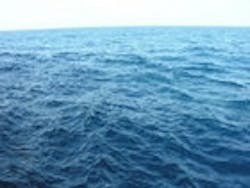EPA, Coast Guard Address Dispersants for Oil Spill
U.S. Environmental Protection Agency (EPA) Administrator Lisa P. Jackson and United States Coast Guard (USCG) Rear Admiral Mary Landry held a press conference call to discuss BP’s use of dispersants in the Gulf of Mexico. On the call, Jackson and Landry provided the following update:
“EPA and the U.S. Coast Guard are taking steps that could reduce the volume of dispersants applied in the Gulf. While we do know dispersants are less toxic and shorter-lived than the oil, much remains unknown about their impact on the environment when used in these unprecedented volumes. For that reason, EPA and the USCG are directing that BP use dispersants in the most effective and efficient way possible, thereby minimizing the total amount used.
“What the monitoring data indicates so far is that the underwater use of dispersants is effective at breaking up the oil and, to this point, does not seem to have had any significant impacts on aquatic life. Using the dispersant underwater at the source of the leak also requires far less dispersant to be applied. For this reason, EPA and USCG have informed BP that they should focus the use of dispersants underwater and only use the dispersants on the surface under specific conditions--for example, if they are unable to apply them underwater for a period of time. This could cut overall dispersant use by half and possibly more.
“EPA and U.S. Coast Guard consider BP’s scientific analysis of alternative dispersants insufficient. Late last week, EPA directed BP to analyze other available, pre-approved dispersants to determine if an alternative dispersant proved less toxic and more effective. BP responded to the directive within 24 hours. EPA and the Coast Guard believe their response was insufficient and lacked sufficient analysis. We are concerned that BP seemed, in their response, more interested in defending their initial decisions than analyzing possible better options.
“EPA and other government scientists will independently verify the data presented by BP. As a result of being dissatisfied with the response, and to ensure that we know as much as we can know about the current environmental impact, EPA will be performing independent scientific verification of the data BP presented. We will conduct our own tests to determine the least toxic, most effective dispersant available in the volumes necessary for a crisis of this magnitude. Our toxicity tests will address the claims and conclusions put forth by BP in their response to us late last week. And EPA scientists have been tasked with conducting parallel, independent tests to determine if BP’s argument that Corexit remains the best alternative is accurate and supported by the science.”
Rear Admiral Landry is sending a letter to BP formally reiterating the steps outlined by the administrator and the admiral in the conference call. That letter will be made public as soon as it is sent.
Source: U.S. EPA
